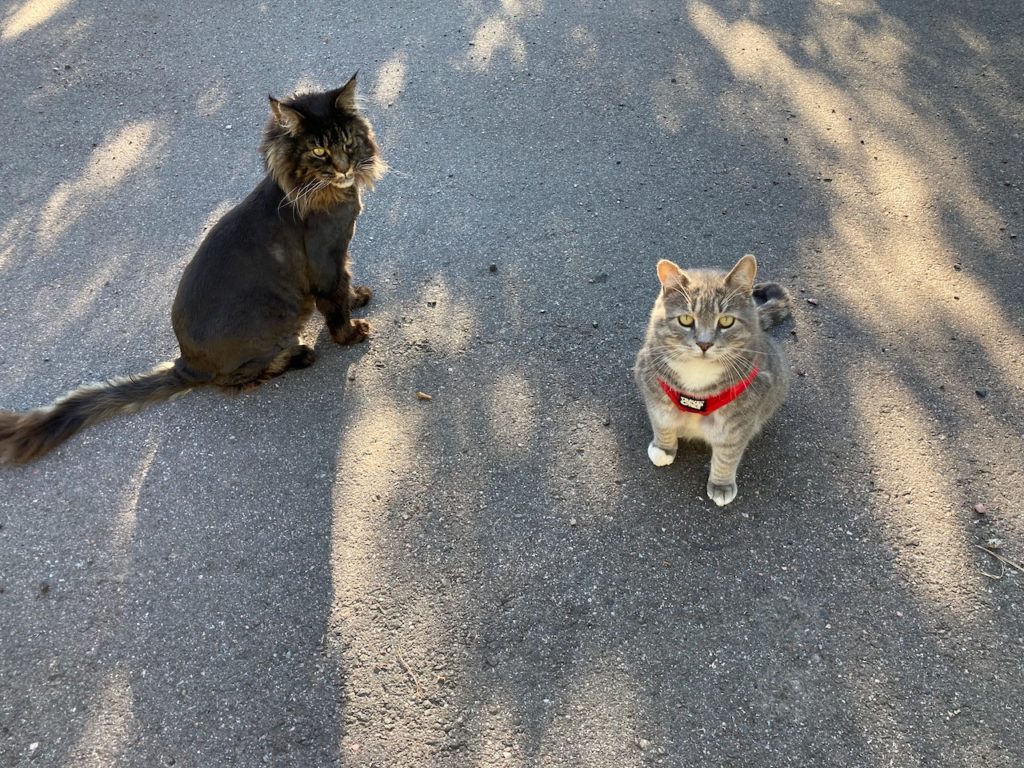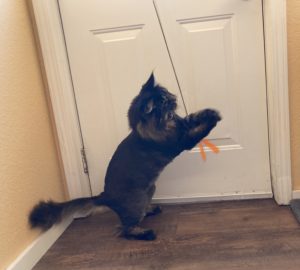
Cats are the only domesticated animals whose ancestors are solitary. Horses, dogs, birds, cattle, pigs – all are descended from animals that instinctively formed social groups (herds, packs, flocks…). Cats are what we call “socially flexible”. A cat can be quite happy living on his own but he may join a cat colony (group of cats) if there are plenty of resources – food, places to sleep.
Cats formed a social structure to live alongside humans
The domestic cat’s ancestor, the African wildcat, is a solitary hunter, and does not spend much time with other wildcats unless it time to mate. 10,000 years ago, wildcats were drawn to the wealth of prey found in and around human settlements. Wildcats that could tolerate other wildcats nearby could share the feast. These are the ancestors of our domestic cats today.
Cats are popular pets with a small footprint. It is not uncommon for a cat owner to want adopt another cat. But how do you know if the cats will like each other? What if they fight?
If there is sufficient food, cats will form social groups called colonies. The colony is often a collection of smaller social groups of cats. Cats belonging to a particular social group, will share food, water, latrine areas, sleeping and resting places. Different social groups will take turns using critical resources such as food, water, etc.
Introducing Cats
Gradual step-by step introduction mimics what we see in feral cat colonies. The newcomer initially stays on the periphery of the colony and gradually is accepted by the colony members over time. (See Sharon L. Crowell-Davis, “Cat Behavior: Social Organization, Communication and Development”, I. Rochlitz (ed.), The Welfare of Cats, 1–22. 2007 Springer)
A few years ago, I wrote “Introducing cats: A Short Guide” for my website. The “Short Guide” recommended a step-by-step process for introducing cats. With the new cat in his own separate room, the first step involved exchanging bedding between the new cat and the residents. Subsequent steps allowed the cats to explore each other’s areas while the other cat is out followed by feeding the cats and playing with toys on either side of a door that is closed at first then opened later.
I still recommend the same step-by-step gradual introduction but have made the following updates:
- Eating is not a social activity for cats. Wild cats prefer to take their mouse away from other cats and dine alone. But food still is a way to make cats feel good. So, instead of using your cat’s regular meal to make interacting with the newcomer positive, we will use special treats and toys. The cats can continue eating their regular food at the usual time and place. After all, why spoil your meal by eating with someone you don’t know and may not like.
- Many cat introductions have been done with a door that is ajar and then gradually opened wider and wider. Over the past few years, I have come to the conclusion that it is worth investing in a screen, stacked baby gates or other barrier you can see through. You have the flexibility of being able to cover this barrier quickly with a sheet to interrupt a fixed, direct, aggressive stare between cats; if one cat “rushes” at the other, the barrier is there to prevent a cat fight.
- Another epiphany I have had is that using a carrier (even if it is large and covered with a towel) for supervised visitations is not ideal. The cat in the carrier may feel trapped and unable to leave an unpleasant situation. On the other hand, harness and leash can provide us more control when starting visual contact and supervised visitations – we can deter cats from rushing up to the barrier or perhaps even avoid a cat fight.

When introducing cats, it is best to go slowly – it is better to take baby steps and only have to back up a little if something goes wrong. Of course, make sure to monitor each cat’s body language and demeanor. Each cat is an individual – I have had some cats get together in a matter of days while other can take months. Try to avoid the temptation to rush ahead so that the barriers can come down – the house may still be separated into hostile camps.
Make sure to visit the updated web page Introducing Cats: A Short Guide
Want to keep up with the world of cats? Subscribe to The Feline Purrspective!

